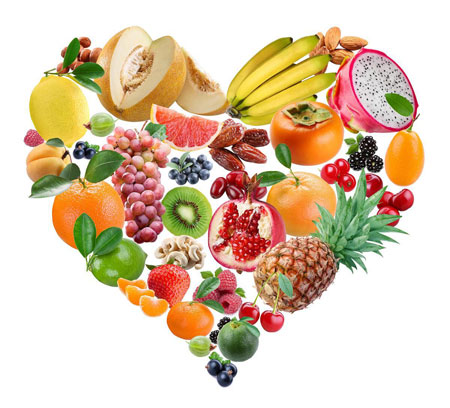Top 10 Tips for a stronger heart
Cardiovascular disease is 100% preventable. Below are some tips to help you on the right track.

1. Fill up on fiber. Not only does fiber help lower levels of LDL (“bad”) cholesterol, it can aid weight management. Being overweight raises your risk of heart failure by a third while being obese doubles it. While two-thirds of Americans are too heavy, only half get enough fiber. Top sources include oats, beans, raspberries, blackberries, oranges and green peas.
2. Go Greens. 99 percent of women and 90 percent of men don’t get enough potassium in their diet. Responsible for regulating the fluid balance in our cells, potassium also blunts the effects of excess sodium. Too much sodium and too little potassium is a recipe for high blood pressure. Strike a healthier balance by cutting back on salt and increasing potassium intake with potatoes, broccoli, avocado, coconut water, kefir or yogurt, spinach, acorn squash, mushroom, and dried apricots.
3. Say “no” to coffee. Four or more cups of daily brew could elevate blood levels of homocysteine, an amino acid associated with increased risk of cardiovascular disease. Drinking more than two cups of coffee a day can harden the arteries and contribute to arteriosclerosis. Instead of drinking coffee, switch to tea; its heart-healthy benefits include lower blood pressure and reduced inflammation.
4. “Beet” heart disease. Beets contain the antioxidant betanin, which can help keep LDL cholesterol from clogging your arteries, per a study published in the Journal of Agricultural and Food Chemistry. Moreover, this root vegetable is a good source of folic acid, which helps to break down that heart-hurting homocysteine. Top sources of folic acid include spinach, citrus fruits, asparagus, lentils, avocados, okra, broccoli, romaine lettuce, and papaya.
5. Become a better listener. University of Baltimore researchers found that people with “dominant personalities” had a 47 percent higher risk of heart disease when compared to their more patient, passive peers. So how do you know if you’re “dominant”? Another study identified several markers – including the tendency to interrupt!
6. The “L” word your heart truly longs for: lycopene. This heart-healthy phytonutrient, found in tomatoes, watermelon, and pink grapefruit – may lower cholesterol levels and reduce inflammation. Harvard researchers found that eating seven or more servings of tomatoes a week might reduce the risk of cardiovascular disease by 30 percent.
7. Choose healthy fats. Monounsaturated fats (think olive oil, avocado, nuts) help lower cholesterol. Another healthy fat – omega-3 – helps reduce inflammation. Omega-3 sources include walnuts and flaxseed.
8. Don’t turn breakfast into break-feast. While skipping breakfast may actually lower your metabolism, going overboard is no better. A new study done at the University at Buffalo found that big fatty breakfasts trigger the release of inflammatory chemicals associated with clogged arteries. So, skip the stack of flapjacks and opt for a strawberry-banana smoothie.
9. Go for a raise. In HDL cholesterol, that is. Higher levels of this “good” cholesterol can be almost as important as low levels of LDL cholesterol at keeping cardiovascular disease at bay. In addition to exercise, quitting smoking and limiting trans fats, a University of Scranton study found that drinking cranberry juice could help boost HDL levels as well consuming good quality fats such as eggs.
10. Most importantly, avoid all refined sugars like bread, donuts, pasta, pancakes, candy, among others. Sugar is well known to increase inflammation in the body, which may lead to an increased risk of developing heart disease.
yogaesoteric
June 25, 2017
